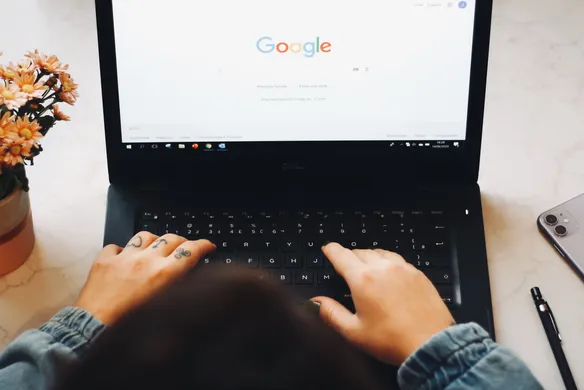Table of contents
Image search can be a powerful tool for your eCommerce business. It can help improve your product visibility online and make your brand more discoverable too. But how do you get your product images to appear?
In this guide, we’ll talk you through the basics of image search optimisation, including how Google Image Search works and ways you can boost your brand presence using optimised product images. Read on to find out more.
Why do you need product images?
Product images give your customers a visual insight into your product. Whether they are placed on your online store or shared across social media platforms, product images can help attract and engage new and existing customers.
Just think like a customer, would you feel confident purchasing a product without seeing what it looks like? Probably not. Incorporating images into your product pages gives your customers the chance to see what they are buying first-hand. This allows you to set expectations that you can then meet, to build trust in your brand.
The importance of product images in persuading your customers
Product images play a vital role in persuading your customers to buy your product too. In fact, studies have shown that product listings with one image have twice as many conversions as listings with no images. Conversion rates then double again for listings with two images versus one.
Similarly, multiple views increased conversion rates by 65%. So, including several images that capture your product from different angles can help recreate an in-person shopping experience and boost your sales.
But it’s not just the number of images that’s important. It’s also the quality of your images. Surveys by popular eCommerce marketplace Etsy found that 90% of UK online shoppers think photo quality is the most important factor in an online sale.
Understanding the opportunity to gain visibility through product images
We know how product images support customer conversions, but how can they improve your brand’s visibility?
Image search plays a huge role in purchase decisions online. In fact, 72% of search engine users regularly search for images before making a purchase.
So, if you optimise your product images for Google Image Search, you can make sure your product appears at this early stage in the purchase journey when your customer is researching or browsing. This in turn helps improve organic visibility and traffic for your business.
What is Google Image Search?
Google Image Search—or Google Images—works in a similar way to Google’s standard search engine. But, instead of scanning text-based content for relevant search results, it scans image file names.
Most of the time the file names are not enough to pick out relevant results, so Google will also scan any text surrounding the image to find the closest match to your search.
Once a customer has searched for a product, Google Images will provide a set of thumbnails that align with the keyword search term. Each image result usually features a:
- Page or product title – taken from the webpage metadata.
- URL – so you can see where the image has come from.
- Badge – such as “product”, “recipe”, etc. based on the structured data provided.
- Stock availability – if provided for a product.
How to optimise for image search
For your product image to rank highly in an image search, you will need to ensure it is optimised. Here is our best practice guide to Google Image search optimisation:
File names
Make sure your file names align with the subject of your image. It’s one of the main elements Google looks at when providing image search results, so stick to simple product names.
Alt text
Alt text can be used to describe your image, which is especially helpful for customers who are unable to view web images. Try to be as descriptive as possible, incorporating a balance of brand-relevant words and keywords, so Google can understand the image subject matter better.
Titles
Avoid embedding page headings and product names inside your image as this reduces their accessibility. Instead, keep all text in HTML and make sure the titles are descriptive.
Image placement
Always make sure your image is positioned near the relevant text, so your product image sits alongside your product description. You should also make sure the most important image is near the top of the page.
File formats
Google Images only supports the BMP, GIF, JPEG, PNG, WebP and SVG files, so try to stick to these where possible.
Structured Data
Adding markup to your product pages provides Google with more detailed information for a richer search result. It means your customers can see the price, availability, and ratings for your product on the image search results page, encouraging them to continue to your site.
Image Search Optimisation and Square Online
Build your own eCommerce site with Square Online. It’s free to get started, with plenty of features to ensure your store is fully optimised for organic search.
You can use the Square Photo Studio app to create high-quality product photos on your iPhone. Get tips along the way to ensure each image is sharp and straight, then add a preset background for consistency across your site.
Turn your optimised images into Square items in just a few clicks and sync them with your digital catalogue for access across your site and social media. You can even create payment links to start selling straight away.
![]()











